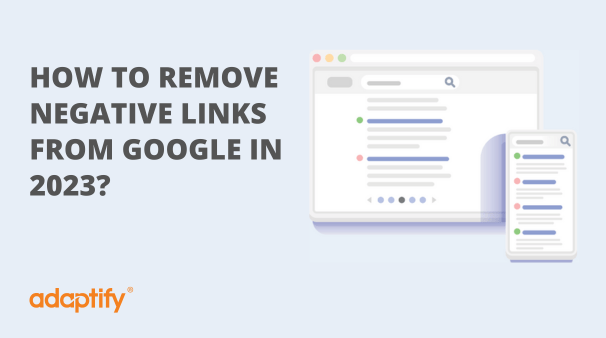Content
- Navigating Search Result Management: Unraveling Removal, De-Indexing, and Suppression of Negative Results
- What Is Search Result Removal and What Does it Mean to be Deindexed from Google?
- What Is De-indexing from Google?
- NoIndex Tags Vs De-indexing
- What Does Search Suppressed Mean?
- How Is Search Engine Suppression Accomplished?
- Review Other Keyword Variations
Navigating Search Result Management: Unraveling Removal, De-Indexing, and Suppression of Negative Results
In the ever-evolving digital landscape, managing online reputation has become vital for individuals and businesses. When damaging content surfaces in search results, it can be concerning and challenging to address. While some instances may warrant content removal from the original publisher’s site, it’s only sometimes feasible or possible. However, other options like search result removal, de-indexing, and suppression can help you manage the situation effectively.
Understanding the differences between these options is crucial to implementing the most appropriate online reputation improvement strategy. In this blog, we will explain the meaning of each of these terms and their difference.
What Is Search Result Removal and What Does it Mean to be Deindexed from Google?
- Remove Search Phrases
- Add A NoIndex Tag.
What Is De-indexing from Google?
NoIndex Tags Vs De-indexing
NoIndex tags are HTML meta tags that webmasters can add to specific web pages. When a page contains a NoIndex tag, it signals search engines like Google or Yahoo not to include that particular page in their index. As a result, the page is excluded from search engine results, making it invisible to users searching for relevant keywords. However, the content remains accessible on the original web page itself.
On the other hand, de-indexing takes a more comprehensive approach. When a website or web page is de-indexed, it is entirely removed from the search engine’s index. This means that the page does not appear in search results and is also eliminated from the search engine’s database. Consequently, the content is no longer discoverable through search engines, and users cannot access it even by directly visiting the original web page.
While NoIndex and de-indexing are methods used to control web page visibility in search engine results, they differ in their implementation and approach. NoIndex is a publisher-initiated action where the webmaster adds specific meta tags to their site’s pages, signalling search engines not to include those pages in their index. In contrast, de-indexing is a process performed directly by the search engine. It involves requesting the removal of a website or specific pages from the search engine’s index, which means they will no longer appear in search results.
What Does Search Suppressed Mean?
Suppression is a reputation management strategy that aims to push down negative or undesirable content in search engine results by promoting positive and relevant information. Unlike search result removal or de-indexing, which involve removing or hiding specific content, suppression focuses on influencing the visibility of search results through content promotion.
To implement suppression, positive and favourable content is created and optimised to rank higher in search engine results. This content may include blog posts, articles, social media profiles, press releases, and other forms of digital media. By optimising this content with relevant keywords and links, you can outrank negative content and push it further down the search engine results pages (SERPs).
How Is Search Engine Suppression Accomplished?
Here are several strategies used to accomplish search engine suppression effectively:
- Optimise Owned Articles
- Create Social Profiles
Establish and optimise social media profiles on popular platforms like Facebook, Twitter, LinkedIn, and Instagram. Regularly post positive and engaging content to these profiles, as they often rank well in search results and suppress negative search results.
- Publish New Websites
- Contribute to Third-Party Websites
- Add Backlinks from Owned Assets
- Optimise for Featured Snippets
Review Other Keyword Variations
Trust Adaptify to provide the best solution for your ORM challenges and safeguard your brand’s image in the digital landscape. Contact us today to get started on a successful reputation management journey.











